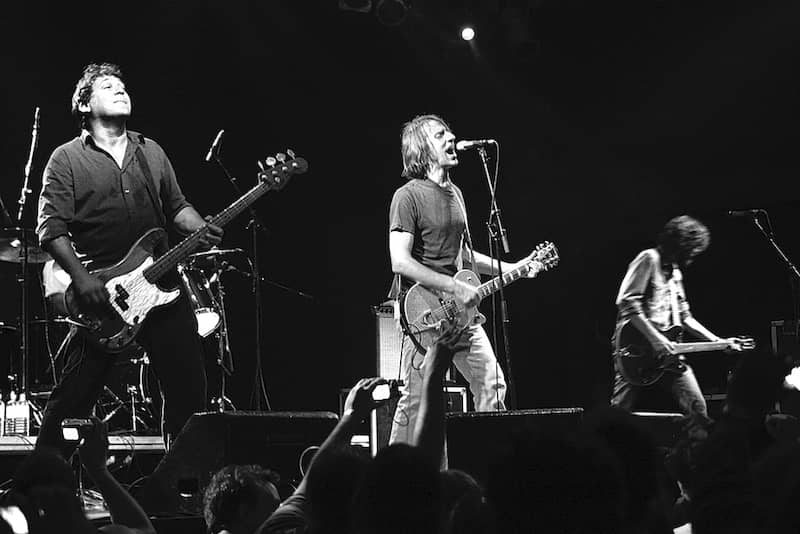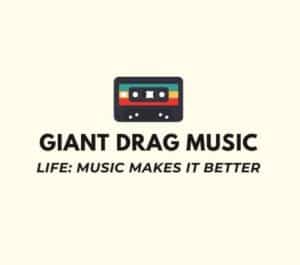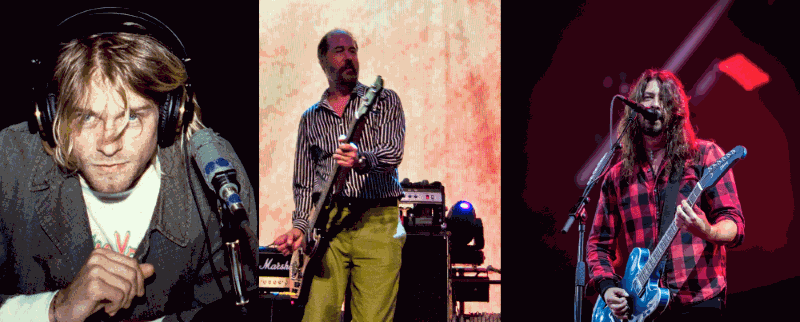Nothing epitomises the disillusionment, apathy, and general sense of things being “pointless” better than grunge music. The genre captures the essence of Generation X malaise and turns it into music. In doing so, grunge music captured the attention of a generation and became the soundtrack for a youth that had no hope of a decent future.
Origins and Meaning of Grunge Music
Grunge music was the result of a musical merger between punk rock and early heavy metal. The name, a synonym for dirt or grime, denotes the heavy distortion – also often referred to as a ‘dirty’ sound – and aptly sums up the disparaging attitude of grunge music towards the society of the day.
In the early 90s, when grunge reached the mainstream (more on that later), the term became diluted by the mainstream music press. They decided to label pretty much anyone who had long hair and played in a band “grunge”. The failure of the press to apply subtlety has resulted in the genre being ambiguous and many people are unclear about what grunge really is.
The grunge sound originated in Seattle, Washington St., USA, during the 80s. The label applied to a collection of bands that did indeed feature longhaired musicians. However, they also had a punk ethos, and used heavy metal guitar riffs, and metal style solos in their music. They favoured a heavily distorted sound and often used a wailing and guttural form of singing. The most influential grunge bands were inspired by hardcore punk bands, like Black Flag, and early metal bands, like Black Sabbath. Yet grunge music has a slower tempo than punk music and a heavier, generally darker, more ominous sound.
Early grunge bands included Green River, Soundgarden, Skin Yard, The U-Men, and The Melvins. These bands all recorded music with independent record label C/Z Records. In 1986, the label put out a recording titled Deep Six, which featured all the above musicians and neatly showcased the grunge scene at that time. The record showcases the post-punk style of The U-Men, the slow, sludgy, metal style of The Melvins, and the undeniably grungy sound of Green River, who perhaps represent the punk/metal hybrid best of all.
Alongside C/Z Records, another independent record label based in Seattle, Sub-Pop, played a major role shaping grunge music. In 1986, Green River recorded an LP for Sub-Pop, and in 1987 the label released Soundgarden’s first album. A year later, Sub-Pop released Touch Me I’m Sick, the first single by Mudhoney, a band which included members of Green River. The single became the bands most widely known song and was a hit in the underground grunge music scene. All three releases had been produced by Jack Endino, guitarist for the band Skin Yard.

In 1989, TAD’s first album, God Balls, was released on Sub-Pop, along with Nirvana’s debut album, Bleach. Both albums were also produced by Jack Endino and both replicated elements of the grunge sound he and Sub-Pop had been cultivating. Nirvana’s Kurt Cobain said he felt limited by the label’s apparent desire to remain true to the expectations of the underground grunge scene. Reservations about the label led Cobain to search for a new home for Nirvana elsewhere. Eventually, the band made a deal with DGC Records in 1990, which was part of Geffen Records at the time.
But Nirvana were not the first grunge band to seek a major label record deal. By the time Nirvana had signed with DGC, Soundgarden, Alice in Chains, and Screaming Trees had all signed to major labels. What set Nirvana apart, was the fact that their first major label album would almost single-handedly drag grunge out of Seattle, away from the indie circuit and turn it into an international phenomena.
Grunge in the Mainstream
The grunge band, Nirvana, was comprised of Kurt Cobain, Krist Novoselic, and, after trying a series of different drummers, Dave Grohl. The bands first album, Bleach, initially sold just 40 thousand copies but received rave reviews in the music press. Frustrated by Sub Pop, Nirvana signed with DCG as per a recommendation from Sonic Youth’s Kim Gordon. Shortly after signing, the band went to LA to record an album with producer Butch Vig.
The product of this collaboration was Nevermind, an album that included all the usual grunge elements combined with a pop music production quality and additional pop music elements. In particular, Nevermind showcased Nirvana’s mastery of dynamics, changing from soft to hard, from loud to quiet. Cobain learnt about dynamics from the Pixies, whom he loved so much he claimed he wanted to create a Pixies cover band.
Nevermind’s first single, Smells Like Teen Spirit, epitomises the bands new poppy, dynamic style. It became a huge hit, receiving receiving almost constant airplay on MTV and radio stations everywhere. By the end of 1991, Nevermind was selling nearly half a million copies every week. In January 1992, Nevermind replaced Micheal Jackson’s Dangerous as the number 1 album on the Billboard 200 album chart. In the same month, Nirvana performed on Saturday Night Live, which endowed them with rock-god-like status in the eyes of the media.
The fame and intense tour schedule affected the band, particularly frontman and songwriter, Kurt Cobain, whose heroin addiction was fuelled by the unexpected turn of events. In 1993, the band recorded its third studio album, In Utero. The album went straight to number 1 on the Billboard 200 album chart. The band went on tour in Europe in 1994, but it was cut short due to Cobain’s drug problems. Two weeks after his return to the USA, Cobain was found dead from suicide.
After just two years in the mainstream, the world’s most success grunge band came to an end. But this wasn’t the end of grunge. Perhaps thanks to Nirvana’s success, other grunge acts had gained mainstream success during the same period, notably: Pearl Jam, Soundgarden, and Alice in Chains, though none would ever come close to the fame achieved by Nirvana.
Grunge and Riot Grrrl
While still male dominated, grunge distinguishes itself as genre by the number of female fronted, and all female, bands included under the umbrella. The most famous is Hole, who’s front-woman and chief songwriter was Courtney Love, the wife of Kurt Cobain. Like Nirvana, Hole signed with DCG Records and though often overshadowed by Love’s personal connection to Nirvana, went on to achieve significant commercial success of their own. Hole is now considered one of the most successful female fronted rock bands in history, having sold 3.5 million records in the US to date.
Hole emerged from the Pacific Northwest based Riot Grrrl scene, which was a feminist punk movement that combined the DIY punk ethos and elements of third wave feminism. Pioneered by Bikini Kill, other influential bands include: 7 Year Bitch, Babes in Toyland, Bratmobile, and Excuse 17.
Notably more punk than metal, some would argue against including Riot Grrrl into the grunge category. However, there are too many similarities for this to be taken seriously. The difference between the Seattle style grunge and Riot Grrrl grunge is more akin to the difference between British heavy metal and West Coast metal. It is one genre with two distinctive sounds centred around geographic areas. While Seattle grungers sang about alienation and abuse, Riot Grrrl grungers sang about body image issues, sexual abuse, and sexual exploitation. Both reflected the Generation X angst, albeit while drawing on different experiences. The same cannot be said of other musical developments that have been given the grunge epithet.
Post-Grunge
The Seattle Sound, as grunge is sometimes called, drew heavily on the vibe and character of Seattle in the 1980s. The city was working class and poor. The most influential grunge bands, those from the early to late 80s, all expressed a deep dissatisfaction with the world they were living in. There feelings were expressed in sound of the music but also through their lyrics, which often focused on alienation, abuse, self-doubt, and hopelessness. There was real angst in the music and an unsolvable wretchedness. These feelings were also reflected in the grunge scene’s prosperity for alcohol and drug abuse. Numerous members of the early grunge scene were heroin addicts, including Kurt Cobain (Nirvana), Layne Staley (Alice in Chains), Scott Weiland (Stone Temple Pilots), Stefanie Sargent (7 Year Bitch), and Courtney Love (Hole).
Post-gunge bands, such as Bush and Candlebox, and later Creed, Stained, and Puddle of Mud, turned sincere emotions into spectacle for the sake of commercial success. The bands used a clean, radio-friendly sound and palatable lyrical themes in an effort to gain mainstream success off the back of a legitimate musical movement. In fact, the term “post-grunge” has been said to indicate the way these bands have ripped off the grunge sound for their own gain – they have gone past (post) grunge, rather than being part of the original, genuine music movement.
The Future of Grunge
In a way, grunge was always more about an attitude, a perspective, a way of relating to the world than it was about any particular musical style. The feeling informed the music. From this point of view, one could argue that there may never be another grunge band again. The music was formed in a particular space and time, by particular people with specific experiences. But then again, perhaps for many, the world isn’t so different today.
Key Moments in the History of Grunge
- 1986 – C/Z Records releases Deep Six, a compilation album that captures the essence of the first wave of Seattle grunge bands.
- 1986 – Bruce Pavitt founds Sub-Pop Records.
- 1991 – Nirvana release Nevermind. The album reaches number 1 in 1992.
- 1991 – Pearl Jam release their debut album, Ten. The album eventually reaches number 2.
- 1992 – Alice in Chains release Dirt. The album reaches number 6 in the US. Two singles from the album break into the top 10 of the Mainstream Rock singles chart.
- 1994 – Soundgarden releases Superunknown in March. The album goes straight to number 1 in the USA.
- 1994 – Kurt Cobain commits suicide, forever crystallising Nirvana’s place in the Halls of Rock History.
- 1994 – Courtney Love’s band, Hole, release their second album, Live Through This. The album hits the shelves just a week after Cobain’s suicide.




